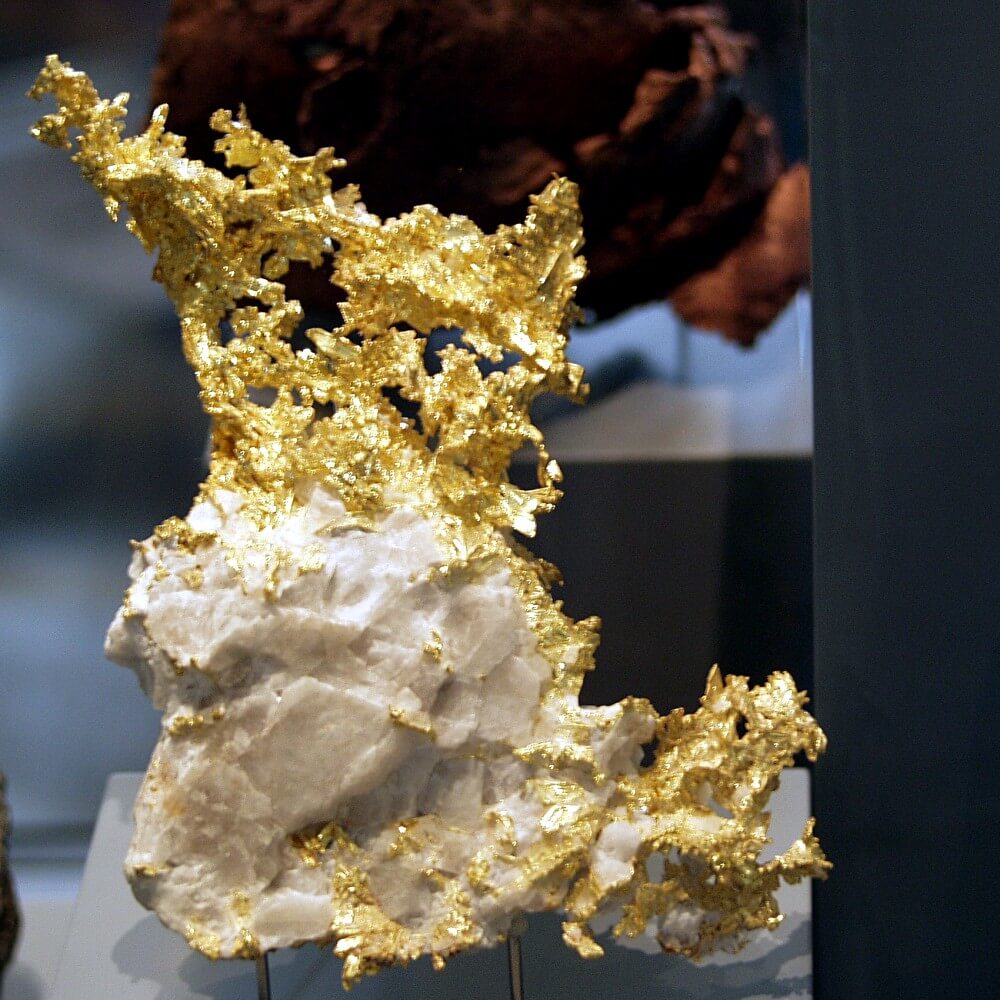
Native gold always contains silver, which occurs in varying proportions, the colour becoming paler with the increase of silver. The finest native gold yet found is that from the Pike’s Peak Mine, Cripple Creek, which was 999 fine. The mean fineness of Colorado gold is, however, only 800. The gold from the Mount Morgan Mine, Queensland, was formerly stated to be 997 fine, but as the gold had been extracted by chlorination, more silver may have been present originally. The finest Russian gold was that formerly obtained at Katerineburg in the Urals, and yielded gold 989.6, silver 1.6, copper 3.5, and iron 0.5 (G. Rose). Gold dust from West Africa has been found to contain 978.1 of fine gold, the remainder being silver. The gold found in the British Isles varies from 800 to 900 fine, the remainder being silver; the specimens from the district around Dolgelly are sometimes a little over 900 fine. The gold in the Andes is generally no more than 600 or 700 fine, but from the Darien Mine it is about 990.
Placer gold is usually finer than that derived from lodes, containing a smaller percentage of silver. The average composition of the placer gold formerly obtained in California was given as gold 883.6, silver 112.4, base metals 4.0. Australian placer gold averages about 950 fine.
Gold is occasionally found alloyed with copper, and sometimes also with iron, bismuth, palladium, or rhodium. Rhodic-gold from Mexico was found to be of the specific gravity 15.5 to 16.8 and contained 34 to 43 per cent, of rhodium.
Related posts: 7 Gold Metal Detectors and 9 Best Magnet Fishing Kits
